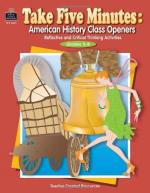|
This section contains 193 words (approx. 1 page at 300 words per page) |

|
Theodore Roosevelt revolutionized the relationship between the president and the press. He took reporters into his confidence, treated them as professionals, and used them much to his advantage. Previously, all presidential announcements were carefully guarded until the day of official release. Roosevelt gave them to the press days in advance, with prohibition on publication until the release date, so that full analysis could accompany the statement.
Roosevelt also invited correspondents he particularly liked, including The New York Times Washington bureau chief Richard Oulahan, known as the "fair-haired," to talk with him during his morning shave. They could not quote him directly without his consent. In this way, Roosevelt adopted a technique pioneered by James G. Blaine, known as the "trial balloon." He could get public reaction to a policy without tying his name to it. When the new West Wing of the White...
|
This section contains 193 words (approx. 1 page at 300 words per page) |

|




